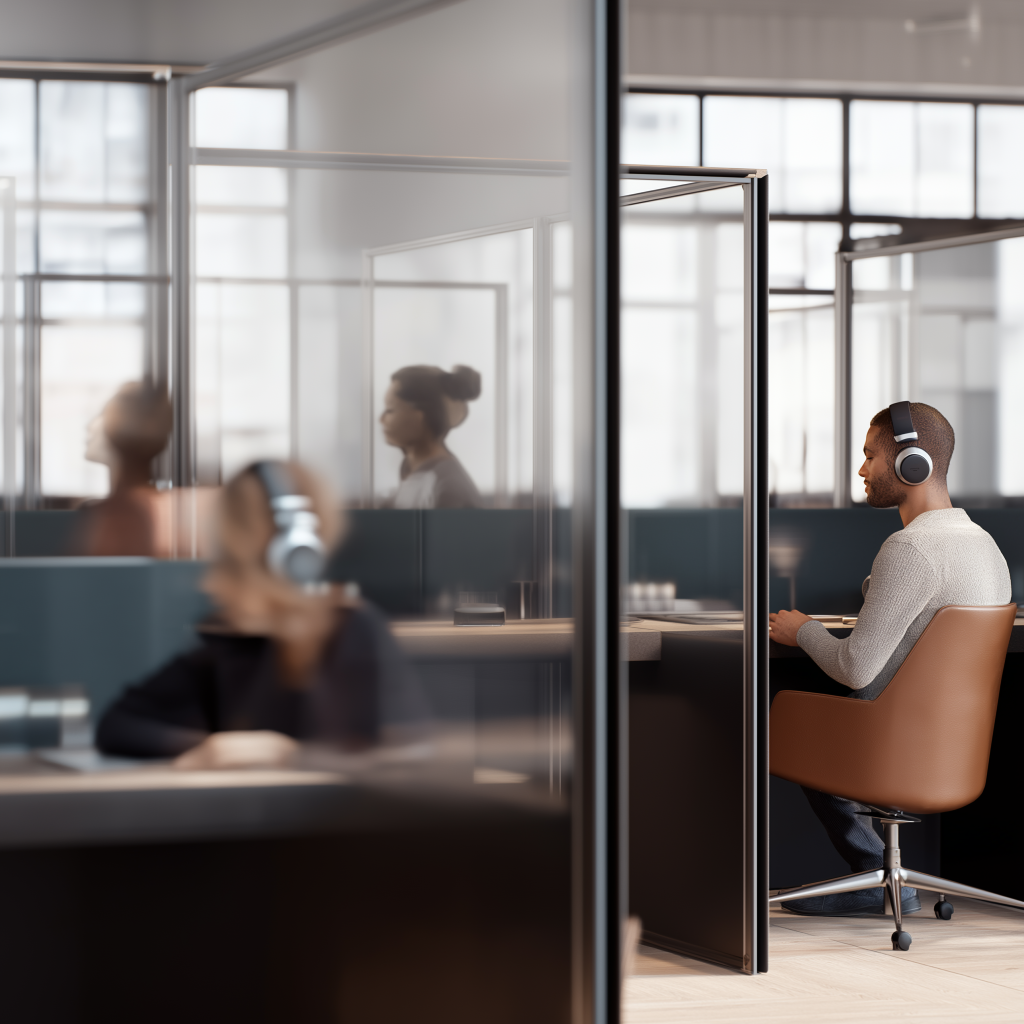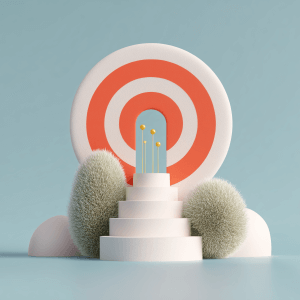How To Stay Productive in a Noisy Open Office Without Losing Your Sanity
Working in an open office can be tough when it comes to noise. There’s the constant hum of conversations, the tap-tap of keyboards, and sometimes even that coffee machine hissing away. But don’t worry—you’ve got plenty of ways to reduce distractions and find your zone.
Key Takeaways
- Noise-cancelling headphones remain a top solution for focusing in a shared workspace.
- Designate quiet zones or set up acoustic partitions.
- Use white noise machines or apps to mask background clamor.
- Co-create noise-reduction rules with your team.
- Consider remote workdays for deep-focus tasks.
How Does Ambient Noise Disrupt Office Productivity?

What Are the Common Distractions?
Open offices can amplify every little sound. Chatty coworkers, phone calls, office equipment, and impromptu laughter can mess with your concentration. Here’s a quick look at typical noise culprits:
- Conversations: Even a chat about weekend plans can break your focus if it’s happening right next to you.
- Office Equipment: Printers, coffee machines, or HVAC systems generate continuous low-frequency noise.
- Sudden Noises: A dropped folder or someone’s spontaneous laugh can jolt your attention away from work.
“Studies show that when noise levels exceed 60 dB—about the volume of normal conversation—productivity can drop significantly.”
The Science Behind the Disruption
Your brain naturally tries to process all incoming sounds, using mental energy you’d rather spend on work. That’s why picking the right tools—like noise-cancelling headphones—helps so much in busy open offices.
How Can You Implement Noise-Cancelling Strategies Step by Step?
Choosing the Right Headphones
Quality noise-cancelling headphones are your first line of defense. But they’re not all the same, so pay attention to:
- Active Noise Cancellation (ANC): Microphones pick up external sounds, then create sound waves to counteract them.
- Comfort & Durability: If you wear them for hours, you want lightweight models with cushioned earpads.
- Battery Life: Look for headphones that can run long on a single charge so you’re not constantly searching for an outlet.
Popular brands like Bose and Sony often tailor certain headphone models specifically for office use.
Configuring Noise Reduction Settings
- Turn on ANC: Block out low-frequency sounds (like your air conditioner).
- Adjust Transparency: If your headphones have a “hear-through” or “transparency” mode, keep it handy for brief conversations.
- Pair With a Noise-Cancelling App: Some headphones have companion apps to fine-tune how much noise you filter out.
Tip: Combining headphones with a white noise app or machine can create a really calm workspace—like a personal sound bubble.
How Do You Create Quieter Work Zones?

Establishing Designated Quiet Work Areas With Your Team
Physical changes matter, but so does teamwork. Here are some steps to get started:
- Collaborate on Noise Policies: Discuss acceptable noise levels. Draft guidelines to preserve certain areas for quiet work.
- Introduce Soundproofing Solutions: Acoustic panels, soft furnishings like rugs, and even sound-dampening partitions can help.
- Create a “Quiet Room”: A separate space can be a lifesaver for tasks requiring total focus.
Tips for Setting Up a Quiet Environment
- Strategic Desk Placement: If possible, put desks away from break areas or noisy equipment.
- Noise-Masking Devices: White noise machines or specialized sound-masking systems help drown out chatter.
- Add Greenery: Plants can absorb some noise while improving air quality.
Even small tweaks can yield big changes in noise levels and overall comfort.
Advantages and Considerations of Noise-Cancelling Strategies
Benefits for Concentration
Quiet work conditions are essential for tasks that require deep thought. Blocking out distracting sounds can lead to:
- Enhanced Focus: You can dig into your projects without pausing every time someone laughs or calls a client.
- Reduced Stress: Constant noise can be mentally exhausting; less of it often means lower stress.
- Better Communication: Video calls and phone conversations become clearer and more efficient when background noise is minimized.
Limitations Based on Office Layout
Not all strategies work the same in every layout. Some spaces might have high ceilings or glass walls that cause echoes. Others might be so open that even the best headphones won’t eliminate all background noise. Consider:
- Open Floor Plans: May need extra acoustic panels or partitions.
- Shared Spaces: If you sit near a printer or coffee station, request or advocate for reorganizing the layout—or rotate those seats regularly.
- Hard Surfaces: Tiled floors and glass walls reflect sound, making it trickier to maintain quiet.
Alternative Strategies
Planning Focus Times for Home Office Days
Sometimes, avoiding the noise altogether is the best solution. If your job allows for remote work:
- Identify Quiet Hours: Early mornings or midday when others are out can be golden.
- Set Boundaries: Tell family members or roommates you’re in “do not disturb” mode.
- Create a Dedicated Nook: Even a small desk in a corner of your living space can do wonders if it’s earmarked just for work.
- Leverage Noise-Control Apps: Try software like Krisp or SimplyNoise if there’s occasional background sound at home.
With home office days, you might notice you finish tasks faster simply because you’re not fighting distractions.
Extra Tips for Different Work Styles
- If You Have Trouble Staying Organized: Use tools like Trello or Asana to plan tasks in short, focused blocks.
- When You’re Balancing Kids or Family: Try to schedule core work hours when the house is quieter—maybe during nap time or after school drop-offs.
- Dealing With Commutes: Listen to productivity podcasts or calming music during your ride, so you arrive at work more focused.
- Managing Mild ADHD: Pomodoro or short, timed sprints can help you maintain focus. Noise-cancelling gear plus scheduled breaks might be especially helpful.
Conclusion
Finding peace in a noisy open office isn’t always easy, but it’s definitely achievable. With the right headphones, acoustic panels, designated quiet spots, and understanding colleagues, you can cut through the clamor and really focus on what matters. Whether that means working from home on intense project days or adding a few new desk plants, every little change counts. A calmer, more productive work environment isn’t just good for your tasks—it’s good for your well-being, too.
Frequently Asked Questions
1. What are noise-canceling headphones, and how do they work?
Noise-cancelling headphones create opposing sound waves to neutralize ambient noise. They’re great for open offices or busy cafés.
2. How can I ask my coworkers to lower their noise levels?
Kindly let them know you need focused time. Something like, “I’ve got an important project. Could we keep the volume down?” often works well.
3. What’s the best way to set up a quiet workspace at home?
Choose a space away from high-traffic areas, add soft materials (rugs, curtains), and possibly use noise-canceling apps or headphones.
4. Are there apps that help with noise reduction?
Yes, apps like Krisp and SimplyNoise can block or mask background sounds, which is especially handy during virtual meetings.
5. What is a sound masking system?
A sound masking system emits a subtle background noise (like white noise) to make conversations less distracting, boosting privacy and focus.
6. How can I manage noise in an open office with minimal changes?
Try noise-canceling headphones, rearrange your desk away from loud spots, or talk with your manager about creating a quiet zone.
7. What are quiet zones, and how do they help?
Quiet zones are designated areas where noise is minimized. Think of them as small oases of calm for tasks needing deep focus.
8. Does the Pomodoro Technique help with noise distractions?
Absolutely. By working in short intervals and taking regular breaks, you can sustain focus—and you’re less rattled by sudden office noises.








